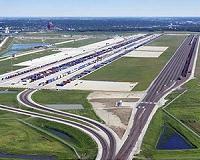 |
Mountain View CA (SPX) Oct 22, 2010 Location awareness is becoming an increasingly vital contributor to the North American mobile user experience. While US wireless carriers reported consumer Location Based Service (LBS) subscribers of approximately 16 million in 2009 (set to grow to over 50 million in 2015), off-deck app-store LBS applications such as Gowalla, Booyah MyTown, Loopt, FourSquare, Family Finder, Poynt, Google Latitude and countless others are growing at much higher rates and are seen nearly everywhere today. Although wireless carriers recognized the revenue potential of location awareness early in the game, with the emergence of smartphone application storefronts like the iPhone App Store and Android Marketplace, they are currently in danger of being marginalized in a sector that promises substantial revenue opportunities. How do carriers remain market leaders in this space? Frost and Sullivan recently completed a whitepaper entitled A Guide to Monetizing Next-Generation LBS: Strategies and Recommendations for the Mobile Ecosystem, which reveals that while annual U.S. LBS revenues are a multi-billion dollar opportunity today, wireless carriers leave themselves in a vulnerable position because many high-revenue services such as family/child finder, mobile advertising and payments security require higher accuracy from the network. "LBS applications that provide high location accuracy in-building and in dense cityscapes are an effective way to differentiate and promote the mobile carrier to both consumer and enterprise subscribers," says Jeanine Sterling, Senior Analyst, Mobile and Wireless Communications Practice, Frost and Sullivan. "Creatively designed, carefully targeted, and strategically priced, these newer, better offerings can differentiate the carrier and its services portfolio from other competitors who often only offer a very coarse level of position accuracy." To achieve higher levels of accuracy, Frost and Sullivan suggests carriers must give serious consideration to deploying a new hybrid location determination solution that employs complementary coverage capabilities. Currently, no single technology alone meets the location accuracy needs of all LBS applications and E911 across all calling environments. Although A-GPS is often hailed as the cure-all for LBS, carriers often must fall back on Cell ID or similar network technologies to compensate for coverage gaps, which include indoor environments and dense urban settings. "One of the worst things a carrier can do is hype LBS and not deliver an adequate level of service to its customers," says Brent Iadarola, Global Director of Research, Mobile and Wireless Communications Practice, Frost and Sullivan. "Customer dissatisfaction can be avoided by deploying a location technology that directly addresses the largest markets and seamlessly integrates complementary technologies to provide the highest possible accuracy across all environments." today, U.S. wireless subscriber penetration stands near 90 percent, with more than 280 million Americans using cell phones. Recognizing the growing enthusiasm for location-enabled wireless applications and anticipating the ongoing resolution of various market and technological issues, Frost and Sullivan forecasts a sizable LBS market opportunity in the U.S. Most recently, advertising and promotion of location-based navigation applications has sparked and fanned stronger interest in LBS on mobile phones. Wireless operators' search for new revenue sources is being fueled by competitive pricing pressures, churn rates, and the continuing decline of voice ARPU -all symptoms of a maturing U.S. mobile market. "LBS applications that provide high location accuracy in-building and in dense cityscapes are an effective way to differentiate and promote the mobile operator to both consumer and enterprise subscribers," says Sterling. "Creatively designed, carefully targeted, and strategically priced, these newer, better offerings can differentiate the carrier and its services portfolio from other competitors who often only offer a very coarse level of position accuracy." Frost and Sullivan research indicates that the Wireless Location Signatures (Polaris WLS) location determination solution created by Polaris Wireless offers a set of capabilities and benefits that deserves serious evaluation by wireless carriers. On a standalone basis, Polaris WLS provides high location accuracy for the majority of cellular calls being made today, those that are made indoors or in dense urban environments. Looking forward, combining the highly complementary WLS and A-GPS technologies into a hybrid solution makes it possible for carriers to obtain superior location accuracy across the complete range of calling environments.
Share This Article With Planet Earth
Related Links Frost and Sullivan GPS Applications, Technology and Suppliers
 Union Pacific Railroad Celebrates Opening Of Joliet Intermodal Terminal
Union Pacific Railroad Celebrates Opening Of Joliet Intermodal TerminalJoliet IL (SPX) Oct 22, 2010 Officials and customers have gathered to celebrate the opening of Union Pacific Railroad's nearly $370 million, 785-acre Joliet Intermodal Terminal. Located approximately five miles south of I-80 and seven miles east of I-55, the facility increases Union Pacific's international and domestic container capacity while improving rail traffic efficiencies throughout the Chicago region, which is ... read more |
|
| The content herein, unless otherwise known to be public domain, are Copyright 1995-2010 - SpaceDaily. AFP and UPI Wire Stories are copyright Agence France-Presse and United Press International. ESA Portal Reports are copyright European Space Agency. All NASA sourced material is public domain. Additional copyrights may apply in whole or part to other bona fide parties. Advertising does not imply endorsement,agreement or approval of any opinions, statements or information provided by SpaceDaily on any Web page published or hosted by SpaceDaily. Privacy Statement |